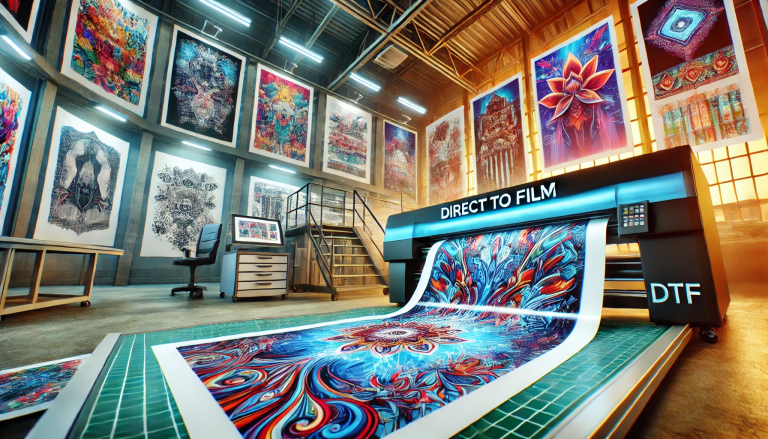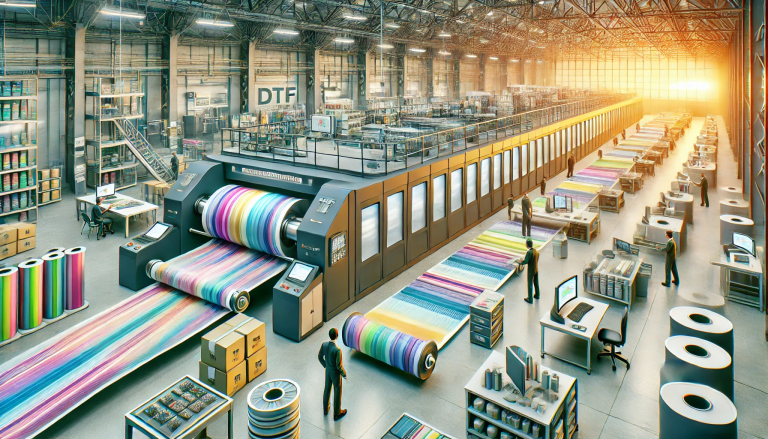“Direct-to-Film (DTF) Printing Versus Vinyl: A Comparative Look at Texture and Feel” -MAXDTF- DTF Digital Transfer paper Supplier, DTF Transfer Sheets Factory, Made in China
Summary:
This article compares the tactile experience of Direct-to-Film (DTF) printing and vinyl, both popular techniques used in textile printing. By exploring what DTF feels like, how it compares to the feel of vinyl, the pros and cons of each method, the ideal applications for both, and future trends in textile printing, we aim to provide a comprehensive understanding of DTF and vinyl.
Part 1: Understanding the Feel of DTF Prints
Direct-to-Film (DTF) is a revolutionary printing technique that has grown increasingly popular due to its ability to deliver vibrant and highly detailed designs on various fabrics. But how does it feel?
DTF prints tend to have a soft and smooth texture that seamlessly integrates with the fabric. Unlike some printing techniques, DTF prints do not create a noticeable “patch” on the fabric. Instead, they become almost part of the material itself, providing a comfortable and natural feel.
Part 2: Comparing the Feel of DTF to Vinyl
Vinyl printing, on the other hand, involves cutting out designs from vinyl sheets and heat-pressing them onto the fabric. As a result, vinyl creates a more tangible layer on the surface of the material.
When compared to DTF, vinyl prints typically feel thicker and more plastic-like. While vinyl is excellent for simple designs and provides durability, it doesn’t seamlessly blend with the fabric like DTF prints do. Depending on the design complexity and the type of vinyl used, the print can feel more rigid, and this rigidity may restrict the fabric’s natural flexibility to some extent.
Part 3: Pros and Cons of DTF and Vinyl
Each of these printing techniques has its advantages and drawbacks. DTF’s strength lies in its ability to produce highly detailed, full-color images with a soft and smooth feel. However, the DTF process can be more complex, time-consuming, and requires specialized equipment.
On the other hand, vinyl printing provides a vibrant, durable, and fade-resistant print, making it ideal for designs with solid colors. It’s also relatively simple and doesn’t necessarily require professional equipment, making it popular for small-scale or DIY projects. The primary downside of vinyl is the thick, plastic-like feel and the inability to effectively handle complex designs or gradients.
Part 4: Ideal Applications for DTF and Vinyl
DTF printing is highly versatile, making it suitable for various applications ranging from custom clothing to home decor. It’s particularly ideal for detailed, multi-colored designs, photo prints, and instances where a soft feel on the fabric is desired.
Conversely, vinyl printing is a go-to method for simpler, solid-color designs. It’s commonly used for creating personalized t-shirts, sportswear, and promotional items. Vinyl’s durability also makes it suitable for items that require high washing resistance.
Part 5: Future Trends in Textile Printing: DTF and Vinyl
The future of textile printing will likely see advancements that aim to enhance the benefits and minimize the downsides of both DTF and vinyl printing. For DTF, innovations are anticipated in developing inks and adhesives that can offer even softer, more natural-feeling prints with increased durability.
On the vinyl front, advancements are expected to focus on creating thinner, more flexible vinyl that retains its vibrancy and durability but feels less rigid on the fabric. The goal is to offer a vinyl printing solution that can better handle complex designs and offer a more comfortable feel on garments.




